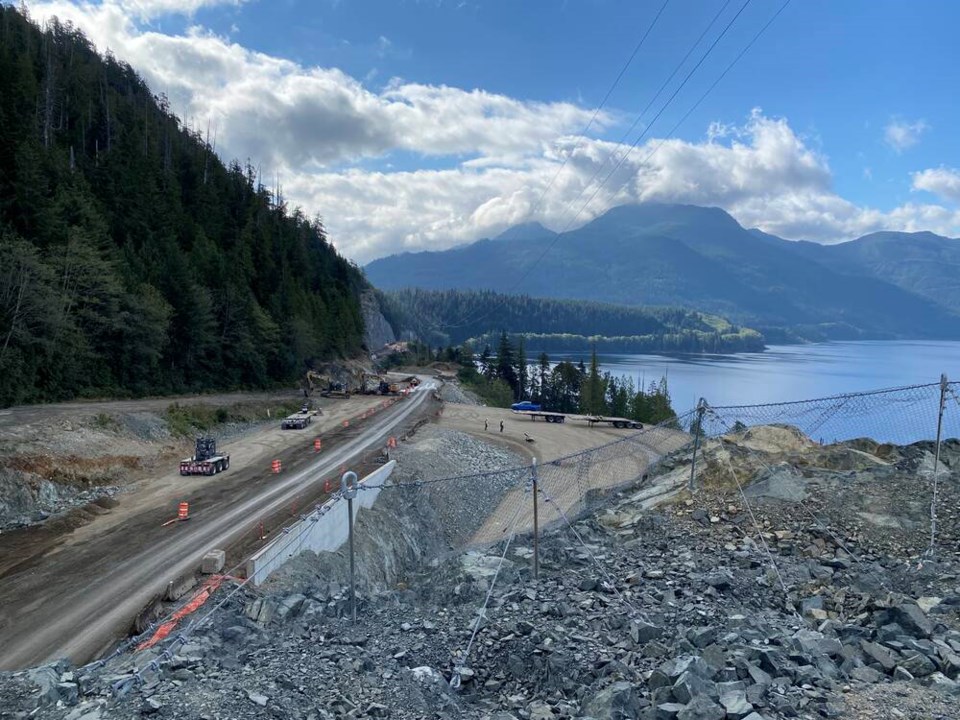Two-way traffic is expected to return to the Kennedy Hill portion of Highway 4 early in the new year, says the Ministry of Transportation.
After just over three years of closures and alternating traffic, the $54-million project to improve the 1.5-kilometre stretch skirting Kennedy Lake is now about 90 per cent complete. The highway is expected to open in both directions in January, with the project complete by spring — weather permitting, the ministry said.
A section of the road between Port Alberni, and Ucluelet and Tofino has been straightened and flattened, with better visibility, wider travel lanes and shoulders, and new roadside barriers between the highway and Kennedy Lake.
The project has removed overhanging rock, which was a hazard for commercial vehicles and a source of rockfalls on the highway.
A new rest area with washroom facilities and viewpoint will be accessible for all vehicle types. The ministry said an improved drainage system will meet standards that increase resiliency to the changing climate.
When both lanes are open early in the new year, traffic disruptions will be reduced to night-time closures and minor interruptions during the day while the contractor continues to work toward final project completion in the spring.
The highway project is $16 million over budget and three years late, with several issues causing delays, including restrictions around the COVID-19 pandemic and major repairs to the highway that were required after blasting caused damage to the site in January 2020.
The ministry said smaller blasts on large overhanging bluffs were required due to the nature of the fractured bedrock. Increased environmental protections also contributed to the cost overruns.
The project budget was increased to $53.96 million from $38.1 million, which includes $13.5 million in federal funding.



